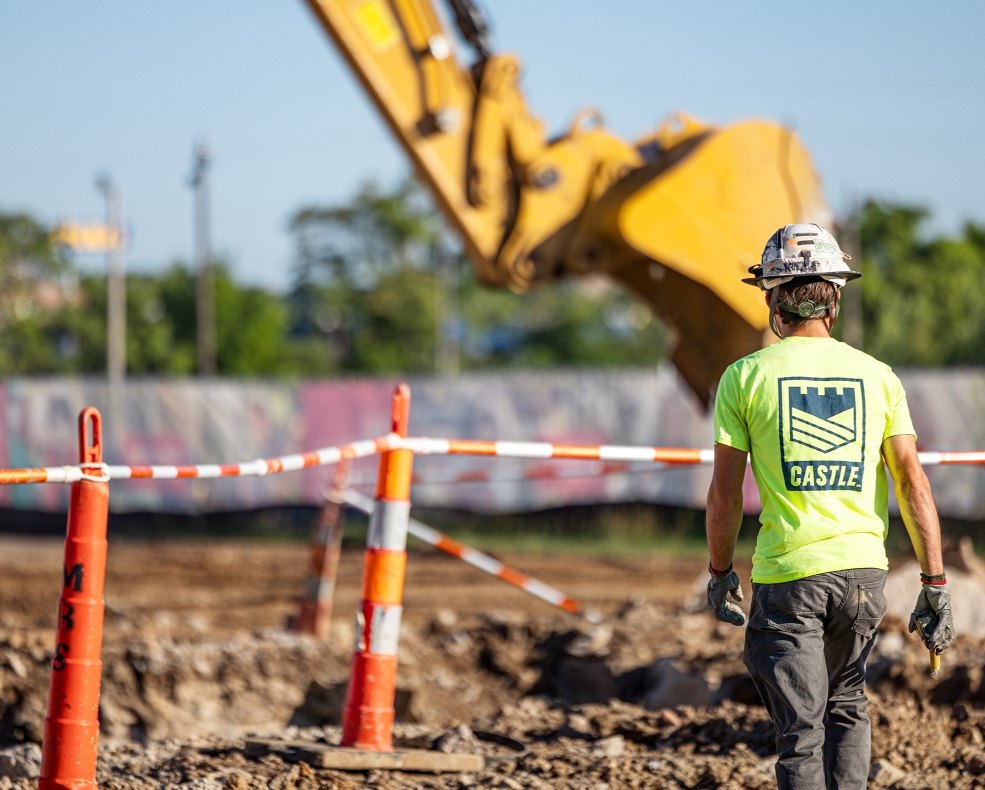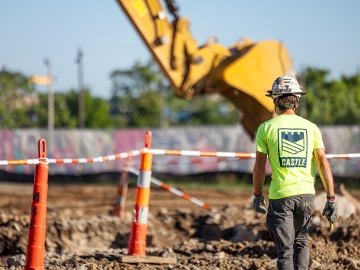What Is Erosion Control in Construction?
Erosion control efforts start during site selection and play a role in every step of the construction process.


Erosion control efforts start during site selection and play a role in every step of the construction process. Accounting for and addressing erosion concerns is a delicate science that poses additional challenges during extreme weather like heavy rain or wind. Both anticipated and unexpected elements like structure and material weight play a role, too.
How Does Construction Cause Soil Erosion?
Heavy equipment, increased traffic and vegetation removal are some ways construction can cause soil erosion on a job site. By churning up the soil, drying it out through exposure to sunlight and removing the underground roots structure provided by grass and plants, erosions due to heavy wind and rain can have immediate and dramatic results on a construction site.
Once it has occurred, erosion can cause costly delays, which is one of the reasons Castle proactively identifies and addresses erosion risks during the pre-construction phase.
Proven Erosion Control Measures for Construction
Before breaking ground, we create a plan to address any concerns about soil stability and erosion.
For owners, it's essential to work with an excavation company that knows how to prevent erosion and other types of soil degradation that can compromise your site and delay the project.
Here are a few of the ways we get it done.
- Minimize excavation impact – The excavation experts at Castle know that careful site selection, proactive layout and planning can reduce erosion risk. Most site plans will only disturb soil directly involved with the project and seek to leave vegetation, including canopy cover from trees, in place as much as possible.
- Soil stabilization – Soil in the project's path or newly exposed to wind and sun is particularly high risk for erosion. We use a combination of soil blankets, mulch and the replanting of vegetation and trees to stabilize the soil during the project and beyond.
- Elevation or slope control – Sloping ground causes shifting soil in both dry and wet situations. Castle can protect sloping ground from slides or washouts by utilizing soft or hard barrier materials like turf blankets, mats, fencing and other tools to create short-term barriers to restrict soil movement.
- Dewatering – Soggy ground poses an exceptionally high risk of erosion by adding additional weight and less friction to the situation. Dewatering is the active removal of water content from a job site before, and often during, a project. It's worth noting that most states require approval for dewatering via permit if the amount of water removed meets certain thresholds.
- Traffic control – Creating dedicated and stable entrances and pathways on the job site for vehicles and equipment reduces the risk of erosion caused by workers driving across and potentially exposing or removing topsoil. This might include introducing temporary gravel roads at construction site entrances and keeping all crews and vehicles on prepared paths between worksites.
- Weekly inspections – Regularly examining the effectiveness of erosion control during construction can help identify problems and provide a course of action before washouts or runoff impacts the work.
Start on Firm Ground with Castle Contracting
For more than 25 years, we've helped our civil construction partners start large projects on a firm foundation. Learn how our project leaders address erosion concerns and keep even the most complex construction projects on schedule with the right mitigation strategies. Contact us today.
More Frequently Asked Questions About Erosion in Construction
How does road construction cause soil erosion?
Like site development, road construction removes vegetation and exposes different soil types to the sun and air. Weather events like rain and wind, artificial water diversion through tunnels and pipes and other practices cause soil to dry out and become more susceptible to erosion.
Who is responsible for constructing terraces to control erosion on construction sites?
Terracing is a common and effective erosion control method. This involves careful excavation to create a stepped or layered job site to reduce the surface area of sloping ground that is susceptible to erosion. In most cases, the site development contractor will be responsible for terracing, though every agreement differs. It’s important to work with a contractor who understands how to prevent water erosion and account for other weather events like frost or strong winds.



